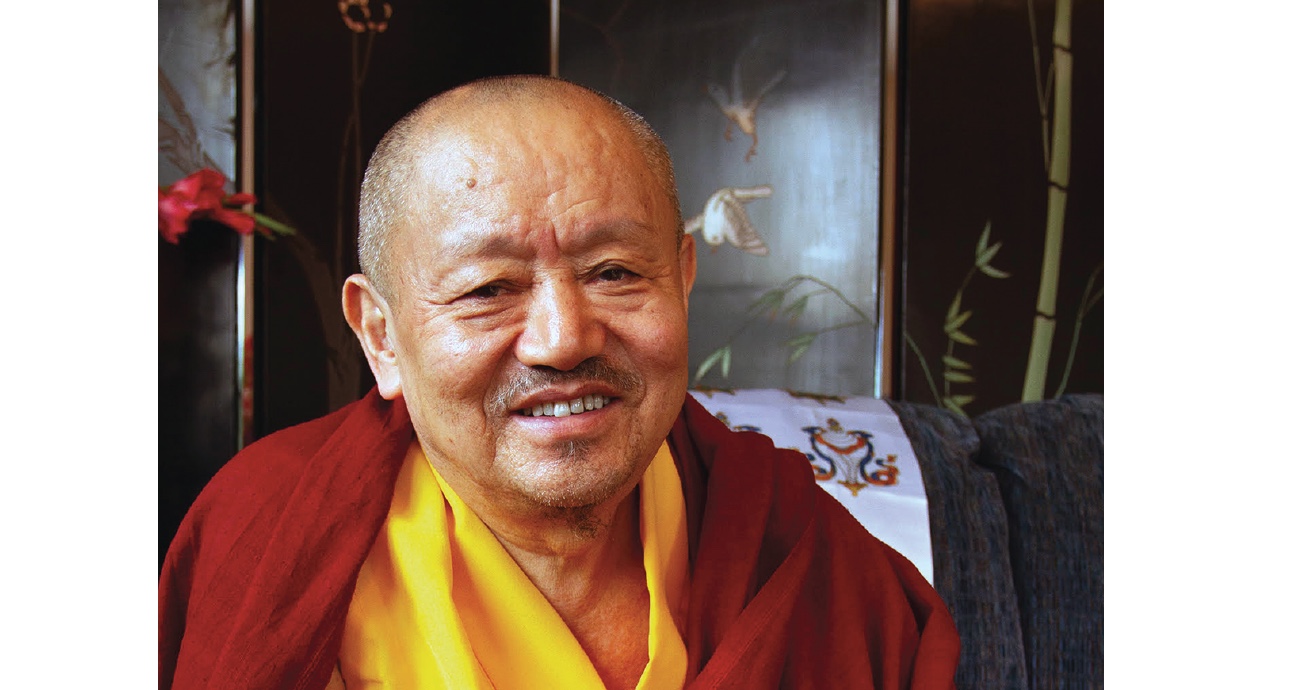Identifying Emotions
First, before one deals with the emotions, one must know what an emotion is. Is emotion mind or not? Are emotions thoughts or concepts, or are emotions feelings? How do we identify emotion? If one doesn’t know the identity of an emotion, of whatever it is that may be arising in one’s mind, then one doesn’t know how to deal with it. So first it is important to know the identity or the nature of the emotion. And, of course, is that emotion a good emotion, a bad emotion, a useful emotion, or a useless emotion?
These are the things one has to identify in one’s own mind for whatever emotion is happening. Of course, we know in general that all sentient beings, even tiny, tiny insects, have emotions. Insects, mosquitoes, snakes—every single sentient being has emotions. It is not that easy to know how to deal with the emotions within all sentient beings, but that is not our topic. Here our topic is that, in our daily life as human beings, emotions are troublesome. They trouble us very much.
Let me start by explaining in this way: Thought and emotion are not one and the same. A thought is not necessarily an emotion. Emotion is, I think, more like feeling, where one has some feeling. So, in that sense of feeling, there is the possibility of good and bad, positive and negative.
In Tibetan, thought is namtok (Wylie: rnam rtog). Thought can be categorized into three: gépé namtok (dge’ pa’i rnam rtog – virtuous thought); mi gépé namtok (mi dge’ pa’i rnam rtog – nonvirtuous thought); and lung matenpé namtok (lung ma bstan pa’i rnam rtog – neutral thought). No matter how many kinds of thought arise, with those thoughts, what sort of emotions might they create? That is what determines if they are virtuous thoughts, nonvirtuous thoughts, or neutral thoughts.
The first category is virtuous thoughts, like the thought of compassion. Compassion is a thought and it can also be an emotion. A thought of compassion is nying jé tokpa (sning rje’i rtog pa), whereas the emotion of compassion is more its quality aspect, a feeling of compassion. That feeling, that emotion of compassion, is good from a very basic level. In Buddhism, and even in general common sense, that kind of compassionate feeling or compassionate thought is good, and is called gépé tokpa (dge’ pa’i rtog pa)—virtuous thought, virtuous emotion.
The second category is mi gépé, which refers to a negative thought as well as negative emotion. A negative thought like hatred may arise and then, when it becomes more the feeling of hatred, it becomes an emotion, the emotion of hatred. That thought or emotion of hatred is called nonvirtuous thought, nonvirtuous emotion, because it is disturbing.
The third category is called “neutral.” In neutral thought there is not much emotion. Emotions fall into positive or negative. When a neutral thought arises like, I want to go to the bathroom, one just thinks the thought. It doesn’t really become an emotion.
Out of these three categories, we may spend lots of time in neutral thoughts. A neutral thought is neither good nor bad, meaning it does not create karma, which is a good thing. It is said that a neutral thought is like a burnt seed. If you put that seed into soil, it cannot grow. Similarly, a neutral thought doesn’t have any specific emotion that causes it to fall into negative or positive.
In general, it is possible for every human being to notice this, if one just becomes a little bit familiar with virtues and nonvirtues. It is also how Buddha taught, based on what thoughts and emotions there are in sentient beings or in human beings, and how they feel about them.
In Buddhism, the dharma is not a separate thing which has nothing to do with human beings—their lives or their minds—or nothing to do with sentient beings. The Buddha’s teachings cover everything about what sorts of thoughts and emotions are going on for us as human beings. Buddhism is talking about the reality of human beings. No matter what kind of religion, faith, culture, or tradition one may belong to or follow, or if one has one’s own specific beliefs, doesn’t even have any beliefs, or just does what one wants to do, still emotions are there.
Out of these three categories, we don’t have to worry about neutral thoughts. Mainly we have to be concerned about two types of thoughts. What are those two types of thoughts? Virtuous and nonvirtuous. And because of those virtuous and nonvirtuous thoughts, what are the two types of emotions? Positive and negative, or virtuous emotions and nonvirtuous emotions. Emotions are more like feelings—they are not just thoughts—like the positive feeling of compassion. Feelings of compassion come with a thought of compassion. Feelings of loving kindness, or feelings of love, come with the thought, I love this. With that thought there is the feeling of love, which is an emotion. And those are, in a way, in the relative world, positive, okay, and good. But if we are thinking, wishing, or wanting to end suffering, and wanting to be liberated from samsara and rebirth in samsara, then we also try to work with even those positive thoughts. There is no need to maintain even those, though that is a higher level of practice.

